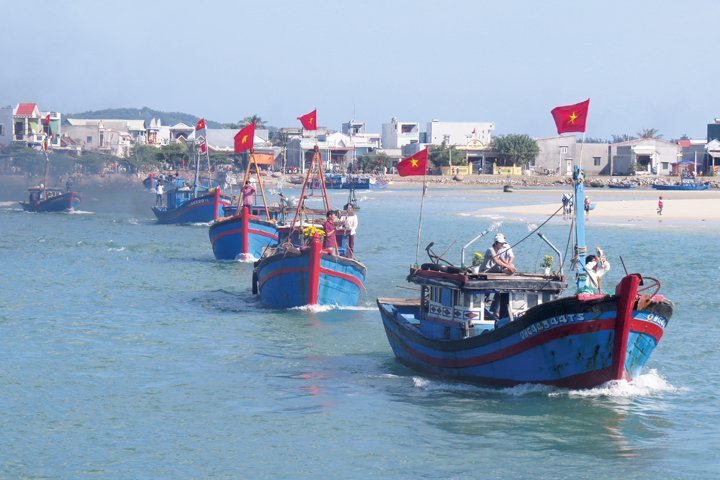
Vietnam is bestowed with rich and varied marine resources. Located in west Pacific, Vietnam has a coast of more than 3,260 km in length and more than 1 million square kilometers of exclusive economic zone.
The East Sea is located in the center of the dynamic East Asian economic region and close to one of the most important and busiest maritime routes in the world. This position is not only important in terms of economics but also security, especially because Vietnam has Cam Ranh port - the dream of many military powers.
Recent statistics show that the marine economy contributes around 47-48% of the country’s GDP, with 64% from oil and gas, 14% from seafood, 11% from shipping and maritime services, and about 9% from marine tourism.
The significant marine resource of Vietnam is the total oil and gas reserves of around 10 billion tons. Seafood resourcesare also very significant, with 1.4 to 1.7 million tons a year, creating jobs for more than 4 million people.
Vietnam has developed the maritime economy strategy to 2020 with the aim to contribute to 53-55% of GDP and 55-60% to export revenues.
However, many experts doubt Vietnam’s ability to realize this strategy because the country does not have a tradition of exploiting the maritime economy.
For a long time, Vietnam fishermen did not attach importance to offshore fishing but now the situation has changed.
Fishing holds an important role in Vietnam both in terms of national income (7% of GDP) and job creation.
According to the most recent report published in 2014 by the World Food and Agriculture Organization (FAO), Vietnam ranked 9th worldwide in 2012 for fish output, with more than 2,418 million tons.
As most of the countries bordering the East Sea, for the past decade, Vietnam has recorded strong growth in fishing, with 46.8% growth rate in the period 2003-2012.
In the current situation, experts said that Vietnam should promote offshore fishing to both develop the maritime economy and to protect the country’s sovereignty in the sea.
In 1997 the government approved the offshore fishing program, under which fishermen were supported to build big fishing ships of over 90 horsepower. This policy has brought about positive results.
In 2012, the near-shore and offshore catching output was in balance, with a rate of 50.6% and 49.4%. This is a significant change compared to that in 2001 with near-shore fishing accounting fro 69.2% of the total catch. Vietnam is expected to reach a rate of 64%-36% by 2020.
The development of offshore fishing also carries important implications in terms of politics: reaffirming national sovereignty of Vietnam in the exclusive economic zone.
To protect fishermen and combat illegal fishing, Vietnam built new vessels for the coast guard force; established the Center for Monitoring Offshore Marine Resources, with a fleet of more than 3,000 offshore fishing boats and a monitoring satellite system.
In 2009, the National Assembly passed the Militia Act, which allows coastal and island administrative units to form self-defense forces and fishing vessels as self-defense forces.
Vietnamese fishermen who work in the traditional fishing grounds of Vietnam in Hoang Sa and Truong Sa (Paracel and Spratly islands) are often harassed by Chinese ships.
If they are well trained, equipped with knowledge of defense and well supported by the functional forces, they will become active militias in protecting the sovereignty and national interests of Vietnam in the sea.
Le Minh Tri